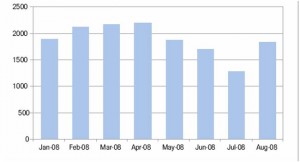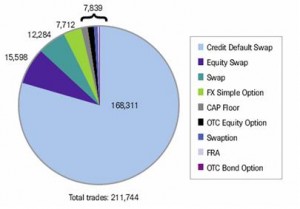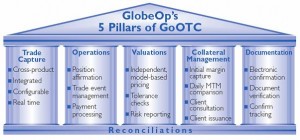Legislation Introduced to Eliminate Carried Interest “Loophole”
As we are all well aware, the partnership structure of hedge funds allows the management companies of these funds to receive an “allocation” of the fund’s income. Under general partnership taxation principles, this allocation is taxed to the management company (and the other investors in the hedge fund) according to the characteristic of that income (at the partnership level). That is, if the income was long-term capital gain at the partnership level, such income would be allocated to all partners (including the management company) and would retain such characterization. Long-term capital gains are currently taxed at 15% (as compared to a 35% tax rate for most ordinary income).
Last week Representative Sander Levin reintroduced legislation to tax the carried interest at ordinary tax rates. The tax would only apply to the managers of partnerships to the extent that such managers did not have an underlying investment in the fund. I will not introduce any political opinions regarding such a tax, but I will note that I take issue with the way that the press and lawmakers define the issue. The most glaring omission in all of these reports is that the carried interest (or performance allocation) is only taxed at long-term capital gains rates if there are underlying long-term capital gains. These articles (including the press release reprinted below) insinuate that all allocations made to a manager will be subject to long-term capital gains rates. Not all income to hedge funds is long term capital gain – in fact, many hedge funds have no long-term capital gains at all because their programs focus on short term or intermediate term trades.
We have discussed this issue a number of times before and believe that the best way for this issue to be addressed is through the political process and we hope that all lawmakers involved take a considered and academic approach when crafting any future tax legislation (see Hedge Fund Taxes may Increase Under Obama).
The press release below is from the office of Representative Sander Levin and provides a sort of question and answer regarding the proposed legislation. I am interested to read your comments on this issue below.
****
For Immediate Release
April 3, 2009
FOR MORE INFORMATION:
Hilarie Chambers
Office: 202.225.4961
Levin Reintroduces Carried Interest Tax Reform Legislation
Bill to Tax Fund Managers’ Compensation at Same Rates as All Americans
(Washington D.C.)- Rep. Sander Levin today reintroduced legislation to tax carried interest compensation at the same ordinary income tax rates paid by other Americans. Currently, the managers of private investment partnerships are able to receive compensation for these services at the much lower capital gains tax rate rather that the ordinary income tax rate by virtue of their fund’s partnership structure.
“This is a basic issue of fairness,” said Rep. Levin. “Fund managers are receiving compensation for managing their investors’ money. They should not pay the 15% capital gains rate on their compensation when millions of other hard-working Americans, many of whose income is performance-based, pay ordinary rates of up to 35%. The President’s budget recognizes that this is unfair. The House of Representatives has recognized that it is unfair, and this year I hope we can act to change the law.”
The legislation clarifies that any income received from a partnership, capital or otherwise, in compensation for services provided by the employee is subject to ordinary tax rates. As a result, the managers of investment partnerships who receive a carried interest as compensation will pay regular income tax rates rather than capital gains rates on that compensation. The capital gains rate will continue to apply to the extent that the managers’ income represents a reasonable return on capital they have actually invested themselves in the partnership.
“This proposal is not about taxing investment, it’s about ensuring that all compensation is treated equally for tax purposes. Anyone who actually invests money in these funds will continue to receive capital gains treatment, including the managers. So there is no reason to expect that the amount of capital available for these kinds of investments will be reduced,” concluded Levin.
Levin introduced similar legislation in the 110th Congress, which was subsequently included in several tax packages approved by the Ways & Means Committee and the House of Representatives. A similar proposal is also included in President Obama’s FY 2010 budget request.
——————————————————————————————————————–
Levin Carried Interest Legislation – H.R. 1935
H.R. 1935 would treat the “carried interest” compensation received by investment fund managers as ordinary income rather than capital gains. In exchange for providing the service of managing their investors’ assets, fund managers often they receive a portion of the fund’s profits, or carried interest, usually 20 percent. H.R. 1935 clarifies that this income is subject to ordinary income tax rates rather than the much lower capital gains rate.
Carried Interest: The Basics
Why is Congress concerned about this issue?
Many investment funds are structured as partnerships in which investors become limited partners and the funds’ managers are the general partner. The managers often take a considerable portion of their compensation for managing the funds’ investments as a share of the funds’ profits using a mechanism called “carried interest.” Partnership profits are taxed not to the partnership; instead partners are taxed on allocations of partnership income, and the nature of that income (capital or ordinary) “flows-through” to the partners. As a result, the investment managers are able to have income for performance of services taxed at the 15% capital gains rate. Essentially they are able to pay a lower tax rate on income from their work than other Americans simply because of the structure of their firm.
What does the legislation do?
It clarifies that any income received from a partnership, capital or otherwise, in compensation for services is ordinary income for tax purposes. As a result, the managers of investment partnerships who receive a carried interest as compensation will pay regular income tax rates rather than capital gains rates on that compensation. The capital gains rate will continue to apply to the extent that the managers’ income represents a reasonable return on capital they have actually invested in the partnership.
What kinds of investment firms will be affected?
This is part of a broad consideration of tax fairness. The principle at work is that compensation for services should be treated as ordinary income and taxed accordingly, regardless of its source. Any investment management firm that takes a share of an investment fund’s profits as its compensation (i.e. in the form of carried interest), will be affected. This will apply to any investment management firm without regard to the type of assets, whether they are financial assets or real estate. The test is the form of compensation, not the type of assets the firm is managing, its investment strategy, or the amount of compensation involved.
What is the effective date of the legislation?
This legislation is designed to create a structure under which this income should be taxed. Decisions on the effective date will be made as part of the legislative process.
Carried Interest: Myths vs. Facts
Myth: This is a tax increase on investment that will hurt economic growth.
Fact: Investors are not affected by this legislation at all.
Any person or institution who invests money in a fund whose managers receive a carried interest will continue to pay the capital gains rate on their profits. In fact, the bill explicitly protects the investments that fund managers make themselves. To the extent they have put their own money in the fund, managers still get capital gains treatment, but to the extent they are being compensated for managing the fund, they will have to pay ordinary income tax rates like other service providers. Since investors are not affected, there is no reason to believe that the amount of capital available for these kinds of investments will be reduced at all.
Myth: Taxing carried interest is just about raising revenue.
Fact: Fairness requires treating all taxpayers who provide services the same.
This proposal would raise revenue, but it is not just an offset. Congress has a responsibility ensure that our tax code is fair, that it makes sense. A broad spectrum of experts, including the Chairman of the Cato Institute and senior economic advisors to the last three Republican Presidents, agree that carried interest really represents a performance based fee that investors are paying to fund managers and that it should be taxed accordingly. Allowing some service providers to pay the 15 percent capital gains rate on their income when everyone else has to pay up to 35 percent risks undermining people’s confidence in our voluntary tax system.
Myth: Fund Managers are just like entrepreneurs who get founder’s stock in their company, so they too should be taxed at the capital gains rate.
Fact: Fund Managers are fundamentally different than the founder of a company.
When someone starts an enterprise, he or she actually owns that business. Sometimes that business becomes enormously valuable, but quite often it fails altogether and the entrepreneur loses her business. When an investment partnership purchases an asset, be it a stake in a small start-up company, a large corporation that wants to go private, a portfolio of securities, or a piece of real estate, the partnership does truly own those assets. The general partner or fund manager though is really only an “owner” to the extent he or she has contributed capital to the partnership. The carried interest the general partner receives for managing the fund’s assets is a right to a portion of the fund’s profit, not to the fund’s actual assets: the manager has no downside risk. If the fund fails completely and all of the partnership’s assets are lost, the limited partners have lost their money. The manager has lost the time and energy he has put into the running the fund, and the potential to share in the profits, but he is not actually out of pocket.
Myth: Fund managers deserve capital gains treatment because a carried interest is risky.
Fact: Many other forms of compensation are risky, and they are all ordinary income.
When a company gives its CEO stock options, it is trying to give her an incentive to increase the company’s share price, to growth the value of shareholders’ investment. If the CEO does a good job and the share price goes up, she pays ordinary income tax rates when she exercises those options. Real estate agents only make money if they actually sell a house, no matter how hard they work. Authors receive a portion of their book’s profits. Waiters get tips based on the quality of the service they provide. All of these people pay ordinary income tax rates on their compensation. Only private equity and other fund managers get to pay capital gains rates on their compensation.
Myth: Taxing carried interest will hurt the pension funds that invest in these funds.
Fact: This has nothing to do with pension funds and their returns will not be affected.
One pension trustee, who also happens to be a hedge fund manager, called the idea that this debate is about workers’ pensions “ludicrous.” As tax-exempt investors, pension fund certainly will not be affected directly, and the assumption that fund managers can charge higher fees than they do today as a result of their having to pay ordinary income rates is extremely questionable. In fact, an attorney representing the hedge fund industry testified before the Ways & Means Committee that investors would be unlikely to accept increased fees. The National Conference on Public Employee Retirement Systems has said that its members do not believe this legislation will affect them.
Myth: This change to the taxation of carried interest will harm every “mom and pop” partnership in America.
Fact: The change would only affect those partnerships where service income is being improperly converted to capital gains.
This legislation would have no effect whatsoever on the vast majority of partnerships that are engaged in ongoing businesses and whose profits are already being properly taxed an ordinary income tax rates. It does apply to investment fund partnerships where the investors in the fund choose to compensate the people managing their assets through a carried interest. In practice, this means hedge funds, private equity funds, venture capital funds and real estate partnerships. The reality is that the fund managers and general partners who would be asked to pay ordinary income tax rates on their compensation are a very small, very well-paid group of professionals. It is also important to note that the bill does not discriminate among partnerships based on the kind of assets they purchase.
(####)
Other related hedge fund tax articles:


